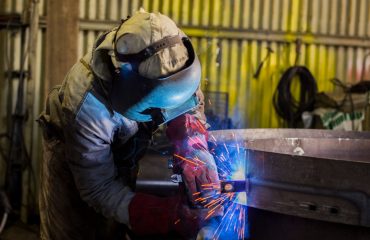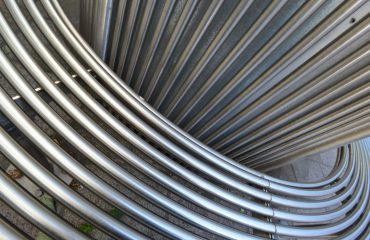The steel industry, a cornerstone of global infrastructure, faces a critical challenge: its significant contribution to greenhouse gas emissions. Traditional steelmaking processes are energy-intensive and rely heavily on coal, resulting in substantial carbon dioxide release. However, a revolution is underway, driven by the urgent need for sustainable practices. This post explores the innovative approaches transforming steel manufacturing into a greener, more environmentally responsible industry.
1. Hydrogen-Based Steelmaking: A Paradigm Shift
The most promising pathway towards eco-friendly steel production lies in replacing coal with hydrogen as the primary reducing agent in the blast furnace. Traditional steelmaking uses coke (derived from coal) to reduce iron ore, releasing vast amounts of CO2. Hydrogen, however, reacts with iron ore to produce iron and water vapor, a significantly cleaner byproduct. This process, known as Direct Reduced Iron (DRI) with hydrogen, eliminates direct CO2 emissions from the reduction stage. While the production of green hydrogen (hydrogen produced using renewable energy sources) currently presents challenges in terms of cost and scalability, significant advancements are being made in electrolysis technologies and renewable energy integration, making hydrogen-based steelmaking increasingly feasible. Furthermore, research into alternative hydrogen carriers and storage methods is also accelerating the transition towards this cleaner technology.
2. Carbon Capture, Utilization, and Storage (CCUS): Trapping Emissions
Even with advancements in hydrogen-based steelmaking, a complete elimination of CO2 emissions in the short term may be unrealistic. Therefore, Carbon Capture, Utilization, and Storage (CCUS) technologies play a crucial role in mitigating the environmental impact of existing and transitional steel production processes. CCUS involves capturing CO2 emissions from blast furnaces and other steelmaking processes, preventing their release into the atmosphere. The captured CO2 can then be utilized in various industrial applications, such as enhanced oil recovery or the production of chemicals, or stored securely underground in geological formations. While CCUS technologies are still under development and require significant investment, they represent a vital bridge towards a lower-carbon steel industry, enabling a gradual transition to cleaner processes.
3. The Circular Economy Approach: Recycling and Resource Efficiency
Steel is inherently recyclable without significant loss of quality, making it a prime candidate for a circular economy approach. Recycling steel scrap reduces the demand for virgin iron ore, significantly lowering energy consumption and greenhouse gas emissions compared to producing steel from raw materials. Implementing efficient scrap collection and sorting systems, as well as investing in advanced recycling technologies, is crucial for maximizing the benefits of steel recycling. Furthermore, designing steel products for recyclability, such as avoiding the use of incompatible materials, contributes to a more efficient and sustainable steel lifecycle. The circular economy approach not only reduces the environmental footprint of steel production but also offers economic advantages through resource optimization and waste reduction.
4. Process Optimization and Energy Efficiency: Reducing the Footprint
Beyond fundamental changes in the production process, optimizing existing steelmaking operations plays a significant role in reducing the industry’s environmental impact. Improving energy efficiency through technological advancements, such as advanced process control systems and waste heat recovery, can significantly reduce energy consumption and associated emissions. Implementing best practices in maintenance and operation can further enhance energy efficiency and reduce operational costs. Investing in renewable energy sources to power steel mills also contributes to decarbonizing the industry, reducing reliance on fossil fuels.
5. Policy and Regulatory Frameworks: Driving the Transition
Government policies and regulations play a crucial role in driving the transition towards eco-friendly steel manufacturing. Carbon pricing mechanisms, such as carbon taxes or emissions trading schemes, can incentivize steel producers to adopt cleaner technologies and reduce their carbon footprint. Furthermore, government support for research and development in green steel technologies, as well as financial incentives for the adoption of sustainable practices, are essential for accelerating the transition. Stringent environmental regulations, coupled with clear targets for emissions reduction, create a framework that compels the industry to innovate and adapt to a more sustainable future. International collaboration on standards and best practices is also crucial for ensuring a globally coordinated effort towards decarbonizing the steel industry.
The journey towards eco-friendly steel manufacturing is complex and multifaceted, requiring a collaborative effort from industry stakeholders, governments, and researchers. However, the innovations discussed above demonstrate a clear path towards a sustainable future for this crucial industry, paving the way for a greener and more responsible global economy.
Tags: green steel, eco-friendly steel, sustainable steel manufacturing, hydrogen steelmaking, carbon capture




